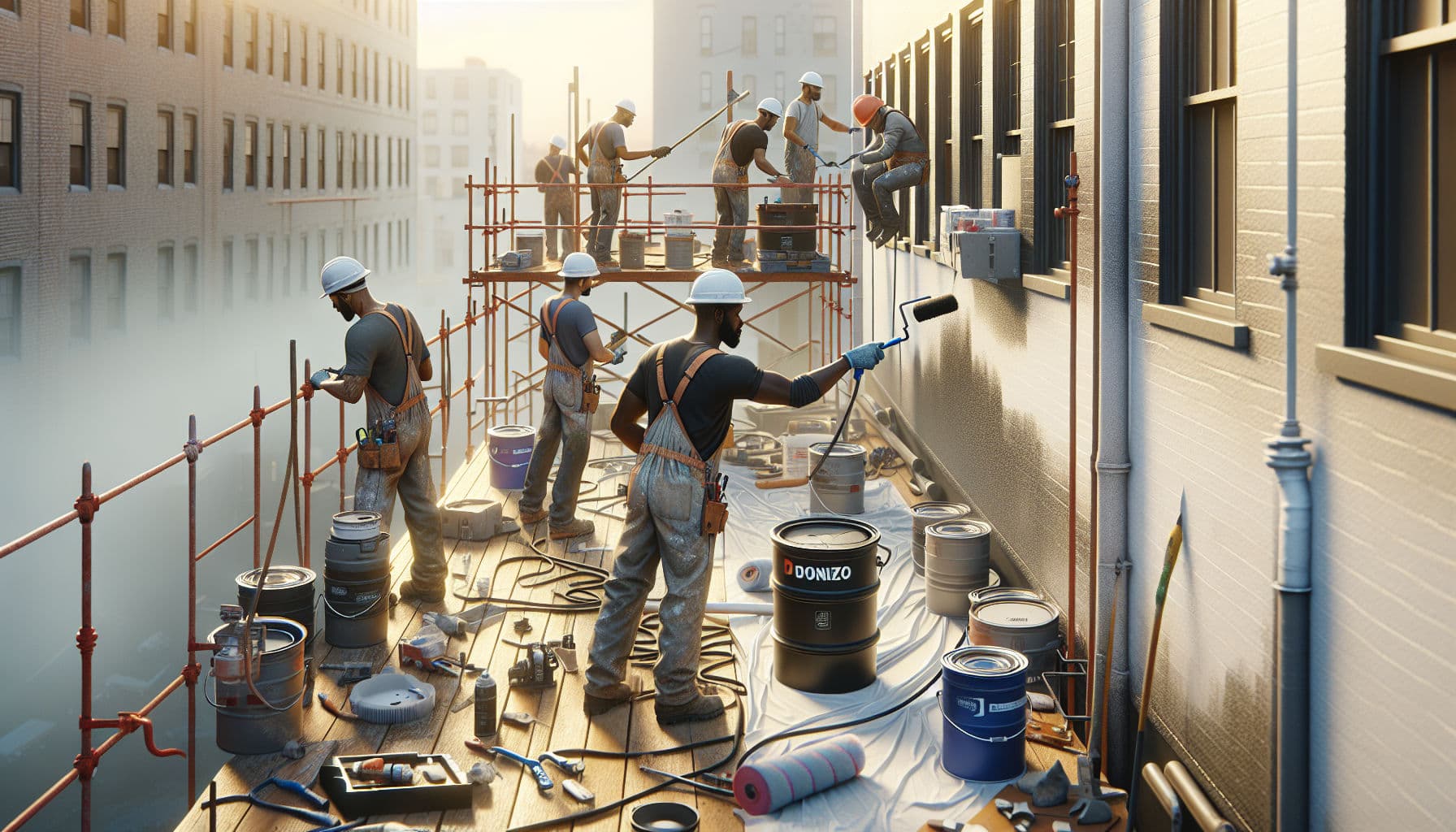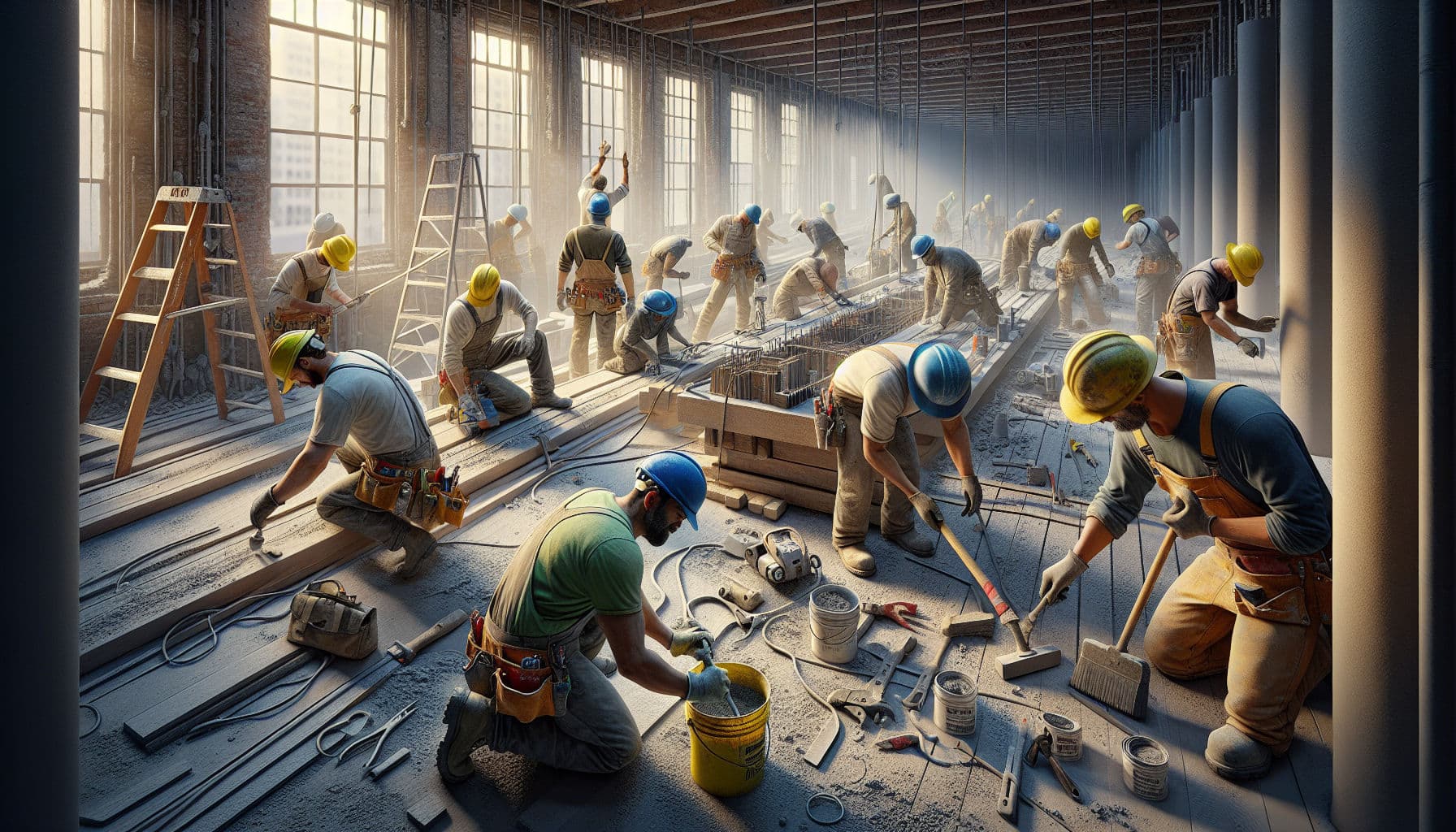GDPR Compliance For Contractors: Practical 2025 Guide
Practical GDPR Compliance For Contractors with a construction photo consent form, secure messaging tips, and retention steps. Protect margins and client trust.
Table of Contents
- Introduction
- Construction Photo Consent Form
- Secure Client Communication Tools
- Data Retention Policy Template
- DSAR Process Steps
- Frequently Asked Questions
- Conclusion
Introduction
If you run renovation jobs in France, Italy, or Spain, you handle names, addresses, site photos, and invoices every day. EU data rules apply to all of that. Why care? Fines can reach €20M or 4% of turnover, but the real pain is lost client trust and admin chaos when a request lands. How do you get compliant without drowning in paperwork? Use simple, job-tested routines: get clear permission for images, keep messages in one place, set retention timelines, and be ready to answer access requests on time.
Construction Photo Consent Form
Photos are gold on residential jobs: proof of hidden conditions, snag lists, and portfolio shots. They’re also personal data when a property is identifiable. The safest path is to collect written permission that covers what you shoot, why, and where it may appear (messaging to the owner, handover packs, or marketing).
Here’s a practical mapping you can adapt for day-to-day use across FR/IT/ES. Always keep the signed document with the job file and note any withdrawal of permission.
| Scenario | Legal Basis | What To Capture | Tip |
|---|---|---|---|
| Before/after images used in marketing | Consent | Scope, channels (website, social), duration | Offer anonymized angles as an option |
| Progress updates sent to the homeowner | Contract | Client name/site, purpose (progress), recipients | Keep photos tied to job ID, not staff phones |
| Subcontractor on site with owner present | Legitimate interest + confidentiality | Who can view, no sharing beyond project | Blur personal items or plates |
| Street‑facing facade visible from public road | Legitimate interest | Limit to building exterior, avoid people | Double-check no minors appear |
| Minors or sensitive items present | Consent (guardian) | Explicit opt‑out for any people | Prefer framing that excludes persons |
Practical checkpoints you can run this week:
- Add a one‑page permission to your contract pack with tick boxes for progress-only vs. marketing use.
- Train the team to take two sets of shots: “work evidence” (private) and “showcase” (only if authorized).
- Use folders named by job code and date. No private albums on personal phones.
- When permission is withdrawn, stop new use and annotate the file. You usually don’t have to delete images needed to defend workmanship claims; keep them restricted.
Helpful regulator resources (in plain language):
- CNIL (France) overview: cnil.fr/en
- Garante (Italy) info: garanteprivacy.it/home_en
- AEPD (Spain) guidance: aepd.es
If you want one place to store permissions, photos, and client notes linked to each job, consider moving that admin into Donizo. It keeps your evidence tidy and findable when questions pop up.
Secure Client Communication Tools
Most small teams start chats on personal apps. It’s quick, but messages get lost, staff change phones, and you can’t prove who approved what. A better approach is to centralize job discussions and make the company—not the individual—own the thread.
A field‑tested setup for small renovation outfits:
- Pick one primary channel for clients. Keep SMS and private chat as backup only.
- Use groups or threads by project code. Pin the agreement on how you’ll share updates and times you’ll reply.
- Turn on two‑factor authentication for all staff accounts. Remove access the same day a worker leaves.
- Export important decisions and store them with the job documents (drawings, selections, schedules).
- Stop image auto‑save to personal galleries. Upload directly to the job folder from the app.
- For sensitive details (ID copies, bank data), never post in group chats. Store in the job file with restricted access.
Security basics your insurer and regulator expect:
- Device lock on phones and laptops, plus remote wipe enabled.
- Shared credentials banned; use role‑based access.
- Quarterly review of who can see job folders.
- Phishing drill: one 10‑minute refresher each quarter.
When disputes arise, being able to pull the exact message history by project is what saves your week. If you’re ready to tidy up communication without adding paperwork, route client threads and photos into Donizo. You get a clean timeline per job, searchable in seconds.
Data Retention Policy Template
You don’t need a 20‑page legal document. You need a one‑page table that says how long to keep each type of record and where it lives. Keep in mind national rules and warranty windows for construction work.
Recommended retention windows for small renovation teams (confirm with your accountant or counsel):
| Record Type | France (typical) | Italy (typical) | Spain (typical) | Where To Store |
|---|---|---|---|---|
| Contracts, drawings, handover packs | 10–11 years (decennial liability context) | 10 years (civil code prescription) | 10 years (LOE long-tail risks) | Job folder (cloud), offline archive copy |
| Invoices and tax records | 10 years | 10 years | 6 years mercantile; 4 years tax checks | Accounting system + PDF in job file |
| Messages and site photos (evidence) | Align with warranty/claim period, typically 10 years | 10 years | 10 years | Centralized job timeline |
| ID documents (clients, subs) | Only while necessary for KYC or site access; then delete | Same principle | Same principle | Restricted folder with access log |
| Safety records (risk assessments, inductions) | 5–10 years depending on document | 5–10 years | 5–10 years | Safety subfolder per job |
How to put this in force:
- Name a single owner (often the PM or office lead) responsible for annual clean‑up.
- Set quarterly reminders to purge items that hit end‑of‑life.
- Lock down folders holding ID cards or bank details; track who accessed them.
- Keep one offline backup for core job documents in case of ransomware.
Two common mistakes to avoid:
- Keeping everything forever “just in case” (higher breach risk, looks non‑compliant).
- Deleting too early—keep what you need to defend workmanship and payments during warranty or statutory limitation periods.
DSAR Process Steps
Any person can ask what data you hold about them and request a copy or deletion where appropriate. You usually have one month to respond. Here’s a lean workflow you can run without a legal team.
Step‑by‑step workflow:
- Verify identity. Ask for enough detail to ensure you’re responding to the right person (address on contract, job ID). Avoid collecting more than necessary.
- Log the request. Date, requester, job reference, and what they asked for. Assign an owner.
- Map where data lives. Job timeline, emails, invoices, photo folders, safety files, subcontractor messages.
- Collect the records. Export messages and images tied to the requester. Note systems that returned “no data.”
- Review exemptions. Keep documents you need for legal claims, tax compliance, or safety records; explain why they’re retained.
- Prepare the response pack. Include what you have, why you hold it, who received it, and how long you keep it. Offer correction where details are wrong.
- Send within one month. If the request is complex, you can extend up to two more months—notify the person within the first month.
- Record the outcome. Store the log and pack in the compliance folder. Use what you learned to fix gaps.
Practical tips from the field:
- Use job IDs in filenames so you can filter quickly.
- When a client asks to delete marketing photos, remove them from public channels and mark them as restricted instead of destroying evidence needed to defend workmanship.
- For subcontractors, share only what relates to their work; do not disclose other personal details from the homeowner.
Frequently Asked Questions
Can I share site photos on social media without written permission?
Better to avoid it. If a property is identifiable, treat it as personal data. Get clear written authorization that states where images will be used and for how long. Offer to blur house numbers, license plates, and personal items. Keep non‑marketing photos private in the project file.
Is personal messaging acceptable for client updates on small jobs?
Short term, yes, but it creates risk: lost records, staff turnover, and no access control. Pick one company‑owned channel, enable two‑factor authentication, and export key decisions into the job file. Centralization makes it easy to respond to audits or client questions.
How long should I store messages and photos from a project?
Match your retention to warranty and legal limitation periods. Across France, Italy, and Spain, a 10‑year window for core project records is a conservative, practical baseline. Keep tax documents per national rules and purge sensitive ID copies when they are no longer necessary.
What happens if I cannot finish a data request in one month?
Inform the requester within the first month and explain the reason. You can extend by up to two months for complex or multiple requests. Keep a dated log of all steps you took. Provide a partial response if possible and confirm the final delivery date.
Conclusion
Privacy can feel like one more admin chore, but the payoff is real: fewer disputes, faster answers when a client asks for records, and a stronger reputation. Put three things in place this week: a signed photo permission, one channel that the company controls for all job messages, and a one‑page retention table. Then run a quick drill on handling an access request so the team knows the steps.
If you want these routines to run quietly in the background while you focus on site work, manage photos, permissions, messages, invoices, and client notes per job in Donizo. It’s the simplest way for small teams in France, Italy, and Spain to keep evidence tidy, respond on time, and protect margins without adding paperwork.
Related Articles
Discover more insights and tips for your construction business

Win Multilingual Clients With Bilingual Proposals (2025)
Serve multilingual homeowners with clear, bilingual proposals that cut rework, speed acceptance, and grow margin. Practical steps, examples, and tools.

Deck Retrofit Essentials That Stop Failures (2025)
Pro guide to safer, longer-lasting deck retrofits in 2025: ledger fixes, corrosion control, waterproofing, costs, and inspection steps that prevent call-backs.

Exterior Painting Weather Rules That Stick (2025)
Field-tested weather rules for exterior painting that prevent failures, cut call-backs, and protect margins. Practical thresholds, tools, and workflows.

Lead-Safe Renovation Essentials 2025
Practical 2025 guide to EPA RRP compliance for small crews. Clear thresholds, field methods, documentation, and pricing—plus faster proposals with Donizo.

Concrete Moisture Testing: Pro Guide 2025
Avoid flooring failures with ASTM-backed concrete moisture testing. Methods, thresholds, step-by-step RH tests, costs, and decisions contractors can trust.

Window Measurement Accuracy Guide 2025
Field-proven methods to measure windows right the first time. Cut remakes, prevent leaks, and turn notes into signed proposals fast.